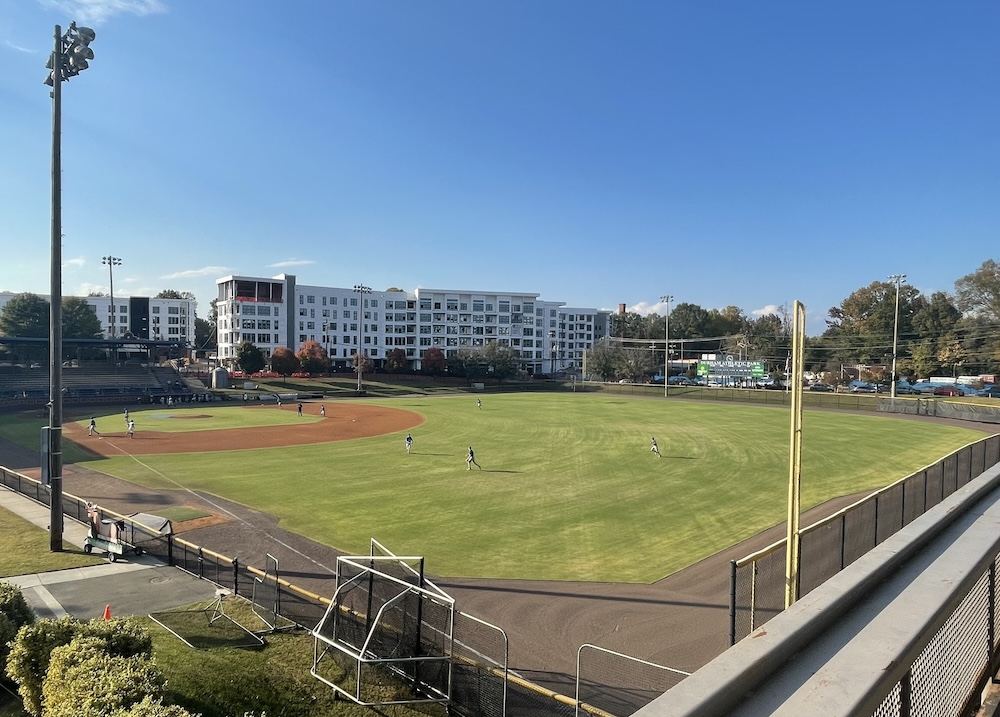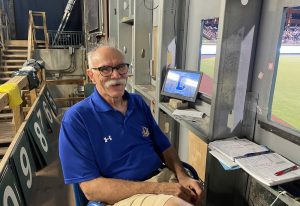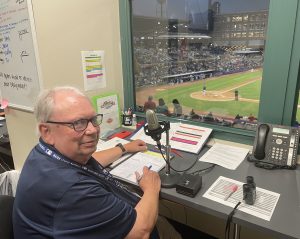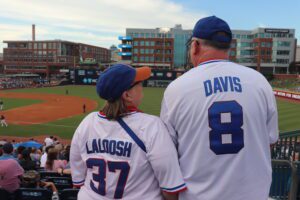In 1979, the City of Durham had some problems on its hands. It had a downtown area with few residents, a warehouse district with few workers, and a ballpark with no pro baseball team. The Durham Athletic Park, known simply as “the DAP,” sat vacant. Built in 1926 and abandoned by minor league franchises in 1971, it was the symbol of a city whose days as a prosperous manufacturing power had passed it by.
Fortunately for Durham, the Atlanta Braves had a problem on their hands, too. They needed a place to send their developing young players who were too good for the Class A minor league level, but not quite ready for AA. The Carolina League was considered “High-A” level, more competitive than A-level teams but less competitive than AA.
That made the Carolina League the perfect fit for the Braves, and the DAP made Durham the perfect city. In 1980, the Durham Bulls began to play at the DAP once again, after a nine-year hiatus.

Flash forward 45 years. The Bulls are considered one of the most popular minor league franchises in baseball history, and Durham is one of the fastest-growing cities in the country. The 5,000-seat DAP that served as a home for the team — and the filming location for “Bull Durham,” the Hollywood hit that helped re-launch the franchise — has been replaced by the 10,000-seat Durham Bulls Athletic Park, or “DBAP,” a few blocks away in the now-busy downtown area.
For years, since the newer Bulls ballpark opened in 1995, the N.C. Central University baseball team used the old ballpark for collegiate games. But then the Eagles discontinued their baseball program in 2021, and the park’s usage has declined since. As a result, the ballpark where Durham’s revival began is once more without a club. And now it appears the city is reconsidering the DAP’s future as a ballpark.
The city awarded a $179,000 grant to the architecture firm Perkins&Will in September to explore more advantageous purposes for the site. With the firm’s final proposal due this summer, the dirt kicked by Kevin Costner and the grandstand graced by Susan Sarandon may be in jeopardy.
Perkins&Will, an Atlanta-based architecture firm, won the project with an initial proposal flexing the firm’s urban design abilities and previous projects in cities such as Atlanta, Austin, and San Francisco. Two of those projects, Turner Field in Atlanta and Candlestick Park in San Francisco, featured the redevelopment of sites formerly used for pro sports stadiums. The firm promised its team would develop up to three design scenarios for the Durham site “informed by community engagement.”
Community outreach is now underway, with an online survey available to the public until Feb. 28, and community events throughout the month to solicit residents’ opinions on what should be done with the site. The survey includes questions about what brings people downtown and asks residents to “rate the importance of preserving the current building.” The survey also asks what historical knowledge residents have about the ballpark.
Tim Alwran, Durham’s senior real estate officer and one of the project leads on the DAP study, emphasized in an email that the city has not yet determined a specific plan for the ballpark and is prioritizing public feedback.
“Currently, the City is in the initial stage of the project, which is community and stakeholder engagement, so there are no specifics ready to be announced for the site at this time,” Alwran said. “The study is being conducted to engage the community at large for feedback as to potential future use(s) of the site.”
‘I hope the city doesn’t tear it down’
Former Durham Bulls owner Miles Wolff, 81, is intimately familiar with the ballparks’s history; he’s the one who brought the Bulls franchise back to Durham and the old ballpark in 1980.
“It just has the feel of a good old minor league ballpark,” he said in a phone conversation. “I hope the city doesn’t tear it down.”
According to Wolff, the DAP was as good as gone before the Bulls arrived in 1980.
“The city had been contemplating tearing it down, and they found out they couldn’t. The land on the ballpark was a gift from the Hill family, who owned the bank, and there was a codicil on the gift that it had to be used for recreational purposes.”
With the DAP in hand, the Bulls franchise soon took off.
“The first Saturday night [they played], we had these cheap plastic vinyl jackets we were giving away to kids,” says Wolff. “We ran out half an hour before the game started. The people were lined up for a block long to get in. We ran out of seating, so I went out and yelled to the crowd, ‘We’re out of seats! You can sit on the outfield banks, but please come back another day!’”
“Nobody left,” he said with a chuckle. “It just exploded from there.”
Wolff, now retired, thinks the city’s turnaround in the ’80s suggests the DAP could still be useful as a baseball stadium.
“The Bulls proved that people would come back to downtown Durham if you had something good,” says Wolff. “Everything just came together. A year after [they arrived], the Brightleaf shopping area, which had once been tobacco warehouses, started. And then there were some condos in some of the tobacco buildings right near the ballpark that opened up.”
The allure of the Bulls and the DAP didn’t just capture the attention of locals. A few years after the park reopened, Hollywood screenwriter Ron Shelton visited to research a movie he was writing about a minor league baseball team and a love triangle.
“He came to Durham to get some feel,” Wolff recalls. “He fell in love with the grittiness — the old tobacco warehouses, the ballpark. He decided, ‘Well, let’s just do the movie in Durham.’”
In the fall of 1987, the DAP became the set for “Bull Durham.” Thirty-five years later, scenes from the ballpark between Corporation and Geer Street were still capturing the imagination of the public.
Yet if you visit the ballpark today, there are almost no signs of its significance to local history. The park has no historical markers, no posters of Costner or Sarandon, and the famous “Hit Bull, Win Steak” sign is no longer present behind the right field fence. Instead, a flier posted near the first base line concession stand touts the Durham Parks Foundation, featuring pictures of pools and an outdoor patio. Titled “This Could Be Durham,” it has a QR code for donations.
Bernard Hatley, 68, works at King’s Sandwich Shop on the corner of Geer and Foster, which has looked over the DAP since 1962. He wasn’t surprised to hear that the city might be developing the site.
“Look around you,” Hatley said. “There’s apartments everywhere. Sooner or later it’s gonna be a live downtown area.”
Wolff thinks the site could still be useful as a ballpark if the city embraced its history.
“You could make it a tourist site,” he says. “You could get some traveling college teams to play there. You could do one night every year called ’Bull Durham’ in the outfield,’ where you show the movie on the big screen and let people sit on the grass.”
“It’s a special ballpark now because of the movie,” says Wolff. “You see a place like Field of Dreams (the site of Costner’s other famous baseball movie) — somebody did something with that. Well that’s in the middle of Iowa, where nobody is.
“Here you could do something.”
The city will do something, but exactly what remains a question. With the community outreach phase of the project set to end on Feb. 28, Durham residents have one more week to offer their input.
Above: Baseball games at the Durham Athletic Park have become rarer, even as more apartments spring up nearby. Photo by Travis Swafford — The 9th Street Journal
Correction: An earlier version of this story incorrectly stated that Miles Wolff lives in Chapel Hill. Wolff — whose neighborhood has a Chapel Hill mailing address, but is actually in Durham — is a proud Bull City resident.














